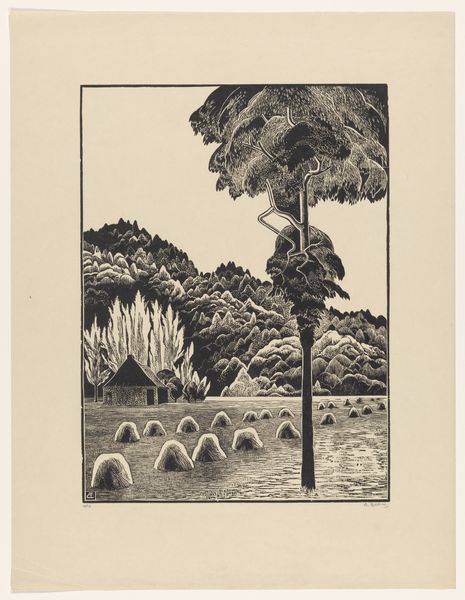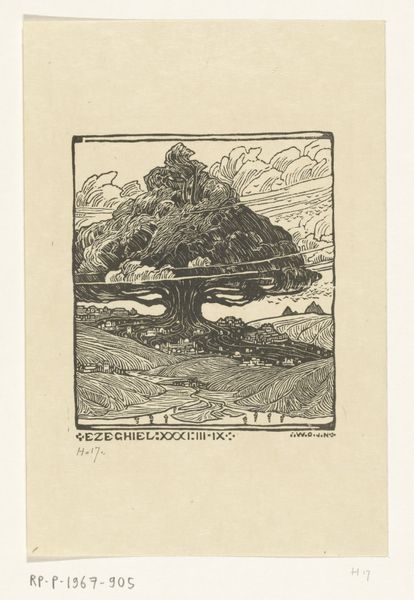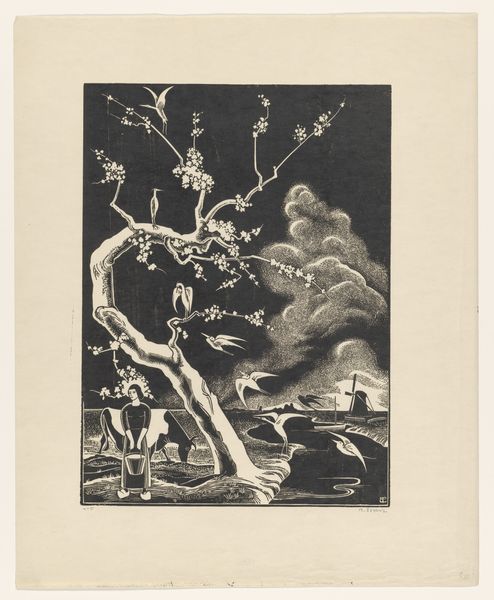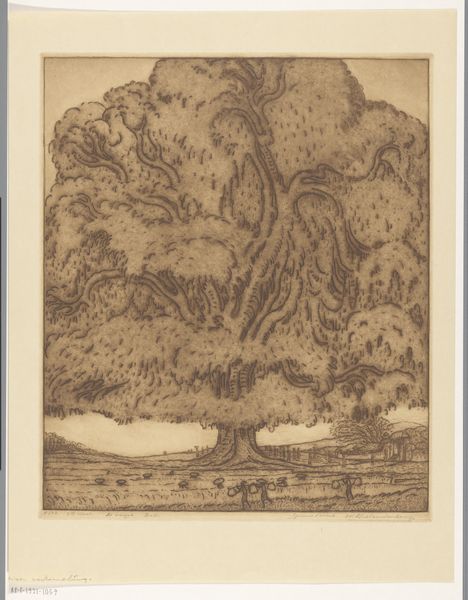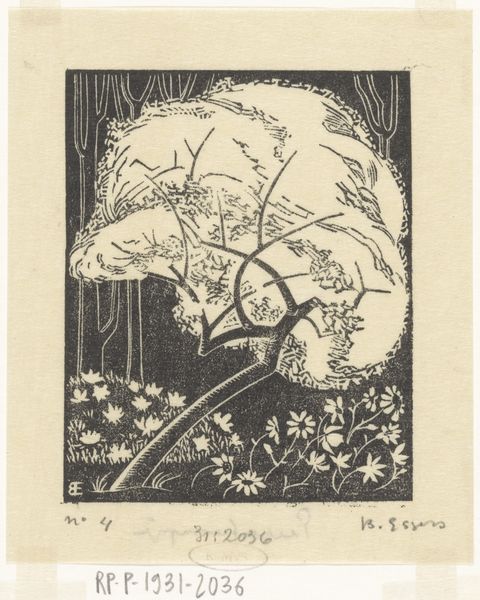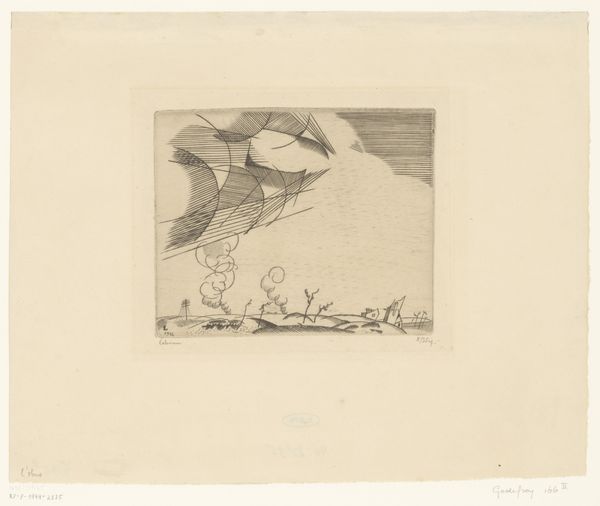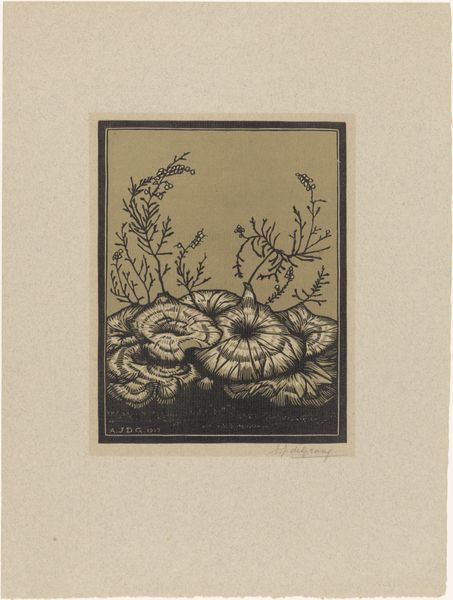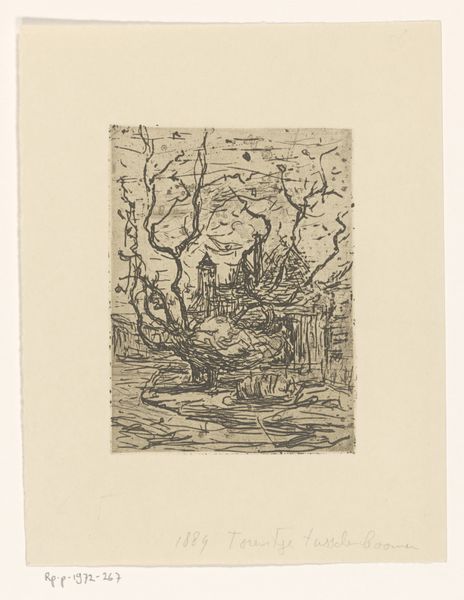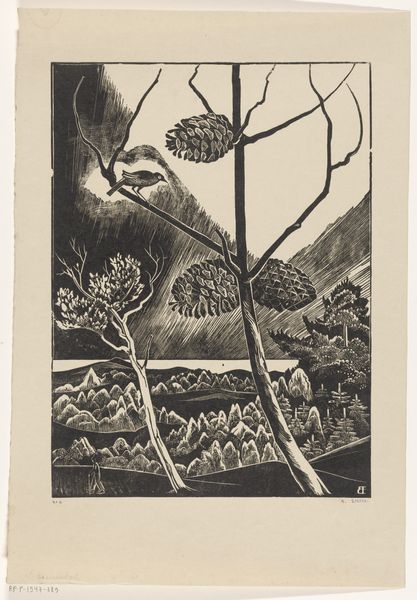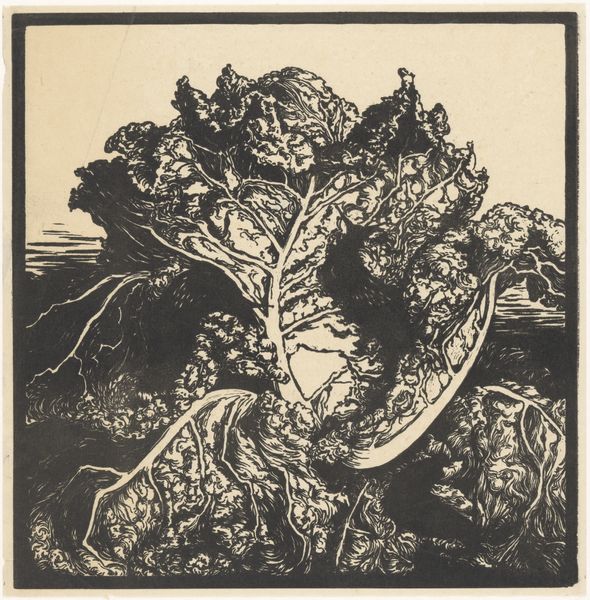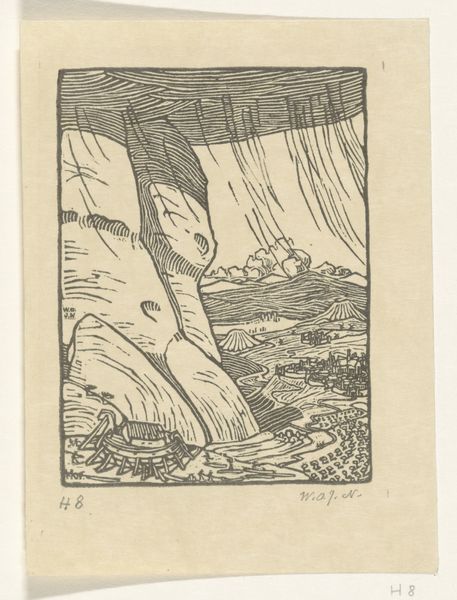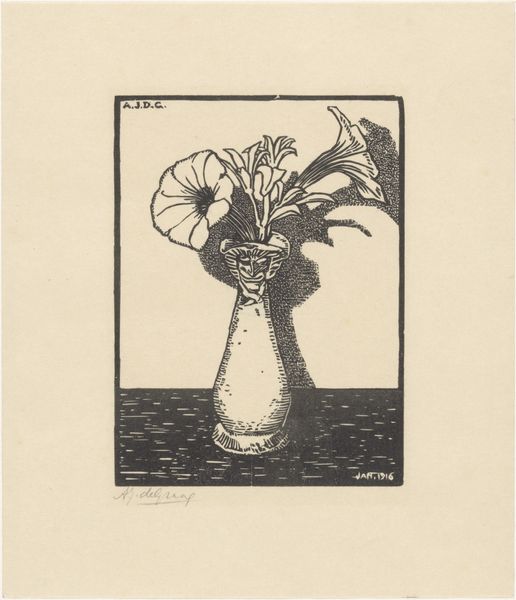
graphic-art, print, woodcut
#
graphic-art
#
organic
#
art-nouveau
# print
#
etching
#
linocut print
#
woodcut
#
line
Dimensions: height 289 mm, width 239 mm
Copyright: Rijks Museum: Open Domain
Curator: Allow me to introduce Julie de Graag’s "Druipende Paddenstoel," created in 1916. This piece, currently residing here at the Rijksmuseum, is a wonderful example of her graphic work using woodcut techniques. Editor: Immediately, I'm struck by the rather sinister beauty of it. The monochrome palette, dominated by earth tones, accentuates a feeling of decay and hidden life thriving in the undergrowth. Curator: De Graag's woodcut displays a remarkable attention to line. Notice how she uses variations in the width and density of the lines to create texture and shadow. The dripping effect from the central mushroom is particularly well executed, contributing to its ominous appeal. This use of line situates it firmly within an Art Nouveau aesthetic. Editor: And doesn't the proliferation of fungi suggest themes present at the time? The start of the First World War perhaps saw the emergence of a darker perspective, one that might find symbolism in such an image that reflects the natural world, which had gained attention among various political forces in society. Curator: Certainly, it’s viable to explore the piece through a historical lens, but it would also be unwise to discount its compositional merit. The composition leads the eye upwards from the density of the smaller mushrooms at the base towards the singular, dripping form at the apex. Semiotically, that single figure almost stands to be a comment on individuality itself. Editor: Yes, and perhaps we might also see the interplay of light and dark—the solid, earthy browns contrasted with blank space—reflecting a world thrown into chaos, mirroring how printmaking allowed for dissemination and new interpretations. These were artworks meant for circulation, not just decoration. Curator: You raise an interesting point, noting that dissemination would likely affect viewership, though De Graag's artistic strength is evident regardless. I'd agree with you there. Editor: A compelling argument; in any case, it offers insights into both de Graag’s artistic intentions and the socio-political context that informs its continued relevance. Curator: Precisely; whether we look to its forms or its function within the period, Julie de Graag’s "Druipende Paddenstoel" truly delivers.
Comments
No comments
Be the first to comment and join the conversation on the ultimate creative platform.

